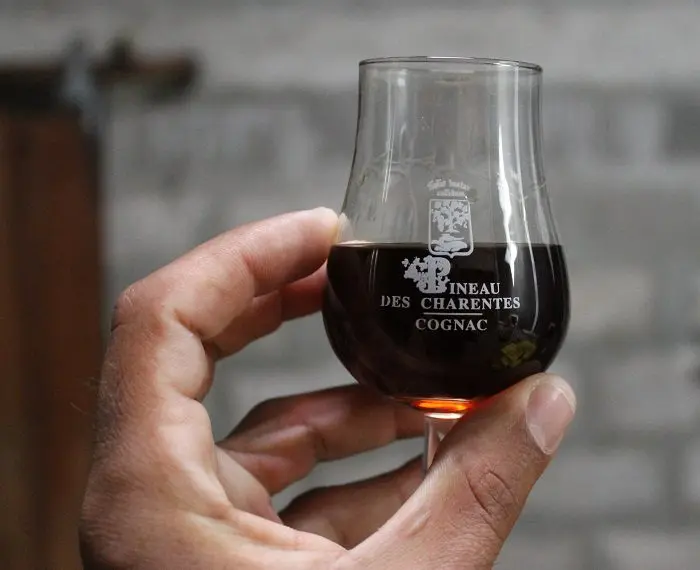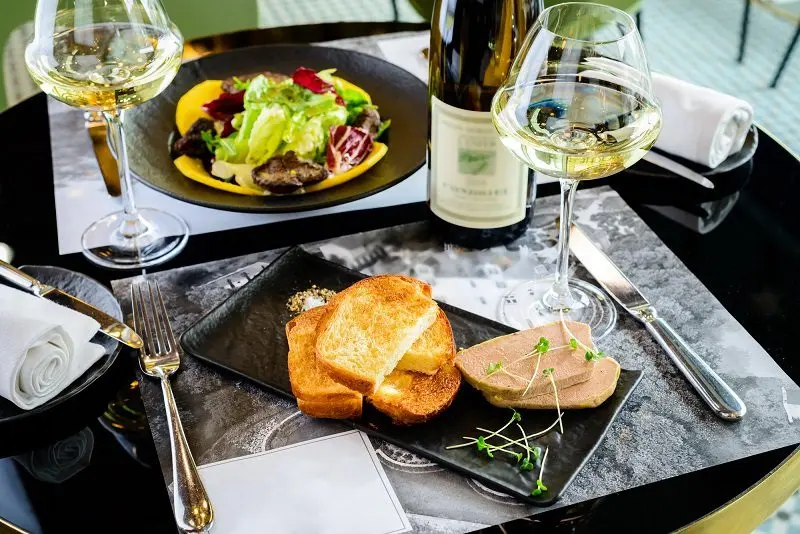Mistelle (mistelle de raisin) is a French “fortified wine”, made on the basis of unfermented grape or apple juice (must) with the addition of brandy – mainly cognac, armagnac and calvados. This group of alcoholic beverages is called vin de liqueur. Due to the fact that a strong distillate prevents fermentation, alcohol is sweeter and more aromatic than regular wine. Fortress mistel – 16-22%.
Strictly speaking, mistelle is not wine, as it contains no fermentation products, only pure juice and distillate. However, in the French tradition it is customary to call this alcohol “fortified wine” (vin de liqueur), in English the term is translated as fortified wine.
Russian-language sources claim that partial fermentation of the wort is allowed, but the French call alcohol that fermented for several days vin doux naturel and distinguish it from mistelle, which should include unfermented juice.
Traditionally, mistelle is made with white grapes, but red and rosé versions are also found.
History
It is believed that mistel appeared in the middle of the last millennium due to chance. A certain owner wanted to add brandy to the wine, but made a mistake with the barrel and poured the distillate into the juice that had not yet fermented.
Even if this is just a funny legend, it is obvious that mistelle has been known in the most “wine” French regions for more than one hundred years, it is especially popular in the provinces of Cognac and Armagnac, and the best examples of mistelle that have received AOC status are also produced here – Pineau des Charentes and Floc de Gascgone.
Production technology
Grape distillate, such as cognac or armagnac, is added to freshly squeezed or slightly standing grape juice (most often right after pressing under pressure, with all branches and skins). Occasionally there is an apple version – such a drink is made on the basis of apple juice and calvados. The usual proportion is 2/3 must and 1/3 alcohol.

The finished “fortified wine” is aged in oak barrels, but the exact period has not been established, it depends on the traditions of a particular region and the wishes of the manufacturer. The drink is filtered before bottling.
Types of mystel
Pineau of Charentes (Pino de Charente). Mistelle from the Cognac region, based on the drink of the same name, aged in barrels for at least a year, sometimes much longer. Unlike analogues from other provinces, it can be made on the basis of slightly fermented juice – but such an indulgence is made only for products supplied to the American market (less than 25% of the total volume).
Floc de Gascogne (Flock де gascony). Mistelle from the Armagnac region, juice and Armagnac for the drink must be produced in the same farm. Aged in barrel for 10 months. The taste is felt tones of white fruits, honey, violets.
Macvin du Jura. A drink from the Jura region, the name is a modified marc-vin, that is, “brandy wine on grape cake”. Available in both white and red varieties.
Pommel (Поммо). Apple mistelle, a mixture of unfermented juice and calvados, not less than 70% are apples of bitter and bittersweet varieties. The minimum exposure is 14 months. It is divided into three types (according to the names of the regions): Pommeau de Bretagne, Pommeau de Normandie, Pommeau de Maine.

How to drink mistelle
Mistelle is most often cooled to 6-8 degrees and served as an aperitif (a drink before the main meal to improve appetite), but mistelle can be washed down with lunch or dinner. In its pure form, it makes a good gastronomic pair with desserts, fruits, blue cheeses, foie gras.

Mistelle cocktails
- Liberté, Egalité, Fraternité (Freedom, Equality, Nobility). Three parts of white Floc de Gascogne, one part of gin and one part of triple sec. Mix all ingredients in an ice-filled shaker, serve with lemon zest.
- Le Pompadour (Pompadour). 3 parts each white Pineau des Charentes and rum, 1 part lemon juice. Mix all ingredients in an ice-filled shaker, serve with lemon zest.









